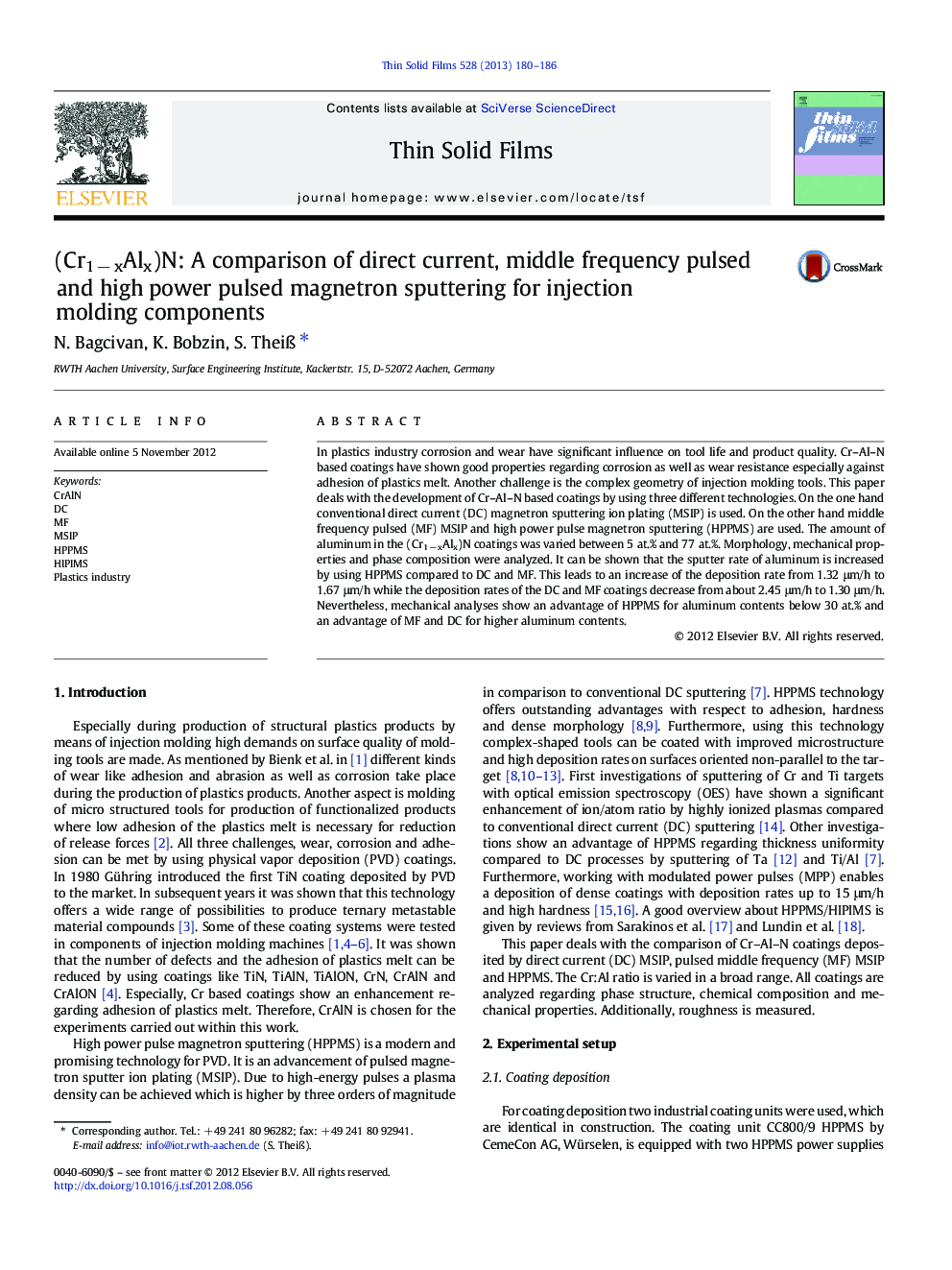| Article ID | Journal | Published Year | Pages | File Type |
|---|---|---|---|---|
| 1666894 | Thin Solid Films | 2013 | 7 Pages |
In plastics industry corrosion and wear have significant influence on tool life and product quality. Cr–Al–N based coatings have shown good properties regarding corrosion as well as wear resistance especially against adhesion of plastics melt. Another challenge is the complex geometry of injection molding tools. This paper deals with the development of Cr–Al–N based coatings by using three different technologies. On the one hand conventional direct current (DC) magnetron sputtering ion plating (MSIP) is used. On the other hand middle frequency pulsed (MF) MSIP and high power pulse magnetron sputtering (HPPMS) are used. The amount of aluminum in the (Cr1 − xAlx)N coatings was varied between 5 at.% and 77 at.%. Morphology, mechanical properties and phase composition were analyzed. It can be shown that the sputter rate of aluminum is increased by using HPPMS compared to DC and MF. This leads to an increase of the deposition rate from 1.32 μm/h to 1.67 μm/h while the deposition rates of the DC and MF coatings decrease from about 2.45 μm/h to 1.30 μm/h. Nevertheless, mechanical analyses show an advantage of HPPMS for aluminum contents below 30 at.% and an advantage of MF and DC for higher aluminum contents.
► By using HPPMS nearly constant properties over a broad Al content are reached. ► Noble gas bombardment leads to dense surfaces. ► Metal bombardment leads to dense and fine grained morphology. ► Formation of hexagonal AlN is deferred to lower Al contents by using HPPMS.
